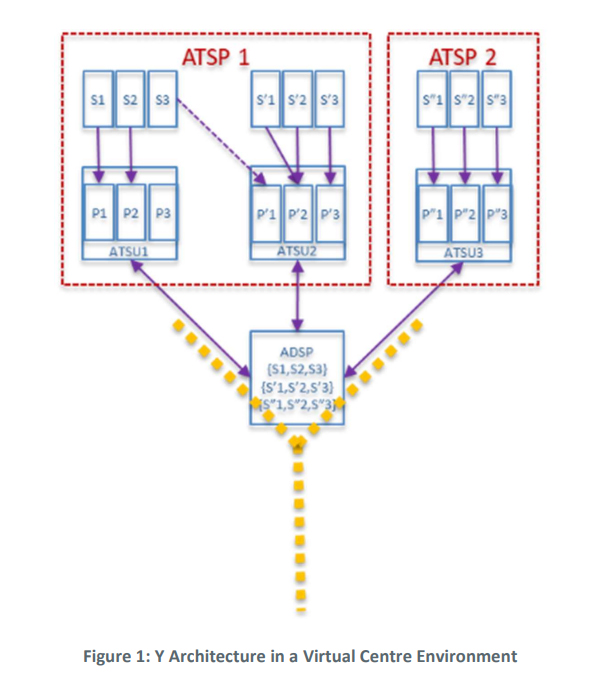Supporting virtual centres through 'one data centre' concept
Introduction
Virtual centre concept refers to the decoupling of air traffic management (ATM) data services, such as flight data, radar, and weather information, from the air traffic service unit (ATSU). The aim of the concept is, on one hand, to enable greater flexibility when it comes to organising air traffic control operations and, on the other hand, to support a more resilient ATM ecosystem.
Two key dimensions of the virtual centre concept are the ability to delegate control of an area of airspace between air traffic service units and the establishment of ATM data service providers (ADSPs) to manage real-time data processing for one or more air traffic service units.
Three supporting architectures are available to facilitate that delegation: D, Y and U, each responding to different virtual centre configurations and operational use cases.
The ‘Y’ architecture allows delegation between two separated air traffic service units with a single virtual centre, in a ‘one-ADSP-to-several-ATSUs’ configuration.
About the Solution
In terms of use cases, the solution enables the deployment of several operational scenarios based on traffic and organisational needs, such as night-time case, fixed time case and contingency case.
In the Y architecture, the controller working positions of the receiving air traffic service units are provided with ATM data by the delegating unit, without the data flow affecting service provision. This architecture is applicable to En-route and terminal manoeuvring area (TMA) operations and it had been validated in low and medium traffic density environments during SESAR 2020 activities.
Both voice ADSPs and ATC ADSPs were monitored during the exercises, alongside communication (broker) and network components. During all the exercises the quality of service was acceptable. The Y architecture demonstrated its feasibility and will provide a sound basis for future SESAR research and Digital Sky Demonstrators (DSD) in its progress towards deployment.
The Y architecture can be deployed according to standardised virtual centre interfaces, or proprietary ones, provided they are interoperable between the air traffic units.
The Y architecture configuration is key to the implementation of the “one data centre” concept, and therefore would foster further investment in the evolution of ATC tools to extend their scope beyond single ATSU areas of responsibility, with capacity benefits and with equivalent safety levels.
The Y architecture solution has reached a TRL6 maturity level during SESAR 2020 activities. SESAR research and Digital Sky Demonstrators (DSD) projects include plans to progress towards higher maturity levels for this architecture and the associated use cases.

Benefits
• Improved capacity
• Increased flexibility and operational efficiency
• Improved cost efficiency
• Increased resilience in terms of ATM service provision
• Cost optimisation and load balancing of the ATC Sector
Datapack
